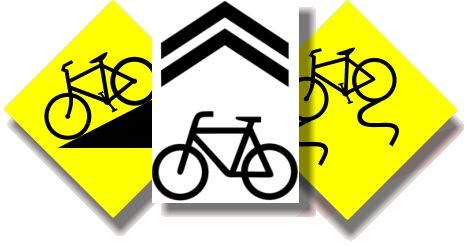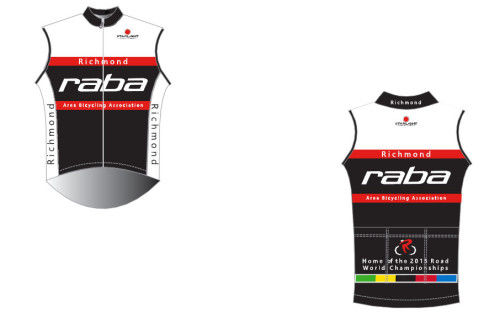 Before Any Ride
Before Any Ride
Although your bicycle is not motorized, it is a vehicle under the law and must be in good working condition when riding, as is the case with any vehicle on the road.
- Check tires to be sure they are pumped up and in good condition
- Check brakes to make sure they are working (State Law). Stand next to your bike, squeeze one lever at a time and try to roll the bike. The wheel shouldn’t roll and there should be at least a thumb’s width between the brake and the handle bar. Look at the brake pads. They should be touching the wheel rim not the tire. When riding don’t use just the front brake, as locking the front wheel can cause you to flip over the handlebars!
- Make sure the gear shifters work correctly.
- Spin your pedals backwards to assure the chain moves smoothly.
- Check brake and shifter cables to be sure they are not frayed.
Safety Considerations When Riding
- Motor vehicles are always a concern. However, most bicycle accidents causing injuries needing medical attention are either solo or bicyclists colliding with each other.
- When being overtaken by a motor vehicle, ride single file. (State Law). If you are riding closest to the shoulder, allow room for cyclists in the road to merge into the line.
- Ride in groups of ten or less with space between other groups to allow drivers to safely pass.
- Give hand signals when turning , slowing down or stopping (State Law)
- If you see a motor vehicle coming up from the rear, call out “Car Back” which signals your group to ride single file.
- Call out “slowing” or “stopping” when you plan to do either so that the group behind you will know your intentions. This will help avoid bicycle collisions.
- Call out road obstructions, such as loose gravel, holes, or road debris and point to the road hazard so cyclists behind you will be aware.
- When crossing an intersection, DO NOT call out “clear”. Each rider must look and make his or her own decision as to when it is clear to enter an intersection. Don’t make yourself responsible for someone else’s crash.
- If you have a cell phone, take it with you in case of an emergency.
Additional Guidelines for Riding in a Pace Line:
- When in a pace line, stay single file at all times unless you are rotating off the pull.
- Ride at a steady pace and avoid coasting. Avoid overlapping the wheel in front of you, especially on the right side. Try to stay a minimum of 2 to 3 feet behind the wheel in front of you at all times.
- Try to minimize braking in the pace line. If possible, soft pedal instead. If you must use your brakes, try to brake as smoothly as possible.
- Limit pulls to one mile or less. If you don’t want to pull, simple rotate through the pull when your turn comes up. Don’t feel like you need to pull – it is strictly optional.
- Try to minimize casual conversation when riding in a tight pace line, especially at speeds over 18 mph.
- If you feel fatigued, drop out of the pace line.
Note that pace line accidents (notably wheel bumps) are a significant cause of RABA accidents. Please pay close attention when riding, especially in tight pace lines!
Weather and Cycling
Our ride leaders do their best to schedule rides based on favorable weather conditions. However, weather conditions can create hazards for cyclists and we cannot always predict that conditions will remain good for an entire ride. When cycling, consider the following:
- Always bring plenty of fluids when riding during hot weather, especially if the temperatures are over 90 degrees. Know the symptoms of heat stroke and heat exhaustion. If you are experiencing difficulty from riding in the heat, please let someone know, stop, get out of the sun, and call for help. Heat is the number one weather related cause of death in the U.S.
- If you are caught in the rain while riding, you may experience difficulty with the operation of your brakes. Adjust your speed and riding accordingly.
- If caught in the rain, turn lights on, just as you would when driving other vehicles. Motorist ability to see is decreased in the rain.
- Windy conditions, where gusts or sustained winds are over 20 MPH, create hazards due to difficulty in bike handling, especially with cross winds. High winds also blow debris into roads and in cases have caused accidents when small limbs have been blown into cyclists’ wheels.
- Cold conditions require layered clothing for protection. Also be aware that black ice can form on pavement when the temperature is below freezing, particularly in shaded areas.
Safety Equipment You Will Often See Club Members Use
- Rear view mirror allows you to see traffic behind you while also looking at the road ahead. It lets you see any hazards such as motor vehicles or cyclists that are too close.
- Blinkie red rear lights and headlight / flashers are required by law at night when lights are required for motor vehicles and improve visibility in the day.
- Bright colored (day) or reflective clothing also improves visibility. Be seen!

